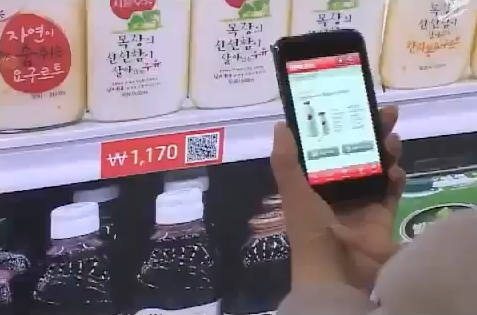Scan the QR Code and the product automatically lands in your online cart. When the online purchase is done it will be delivered to your home right after you get home. People can relax more after work and in the weekends. “I like the way it’s exactly like shopping in the actual store”.
— Made by Cheil (video)
This is an excellent example of what I was explaining in the article Bridging the physical barrier. It addresses the three points you should follow to design things that bridge the physical barrier: understanding, simplicity and usefulness in a big way.
You enter in the subway and you see the new Tesco Virtual Store, it’s very simple to answer the question “what should I do”, and once you understand it you can take some of you time – that you would have lost anyway waiting – to select merchandise and add it to your cart. The delivery happens in a the same day, when you get home, it’s incredibly useful.
If you think about it, is has probably a better experience than most online stores as well, because it’s more physical, and it’s easier to “browse” products this way, even if they are less.
To summarize why this is a great design solution:
- It’s unexpected (understanding).
- It’s immersive (simplicity).
- It’s easier than the competing solution (simplicity).
- It’s a better use of your time right there (simplicity).
- It’s useful for both the people and the business (usefulness).
Think also about the cost: I can’t say for sure from informations I found so far, but it looks like these are the standard backlit billboards, so this solution is as expensive as printing them and having them in the subway, a cost that you’d already have to make a good marketing campaign.
You notice also that… QR Codes don’t matter at all here. It’s a mere technical detail, because you aren’t using a general QR Code reader, but the Tesco / Homeplus application, that people will download gladly because they are waiting. This is a very different situation from the usual “I see a QR Code I wonder what’s that”, because the key element is the cart application (that I expect to be also a mobile shopping app) not the QR Code.
(thanks to Michele for the link)
